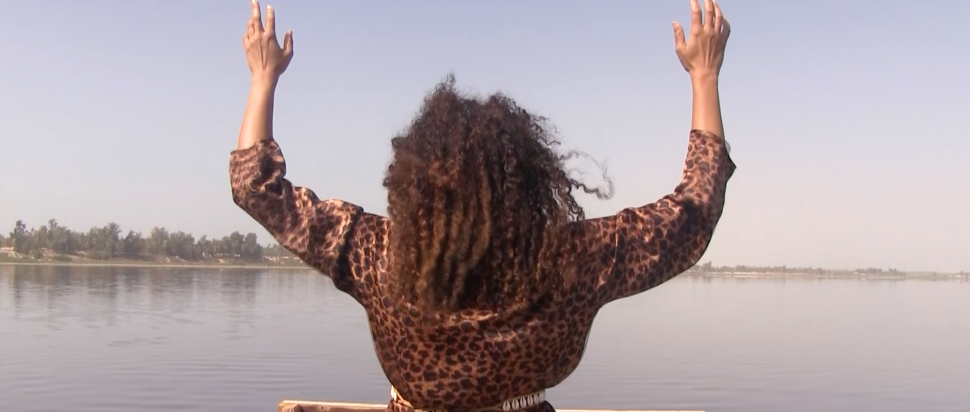Living in Emergency: Alberta Whittle interview
Artist Alberta Whittle shares the intentions of her major and ambitious solo show in Dundee Contemporary Arts, discussing insidious anti-blackness, caring strategies for 'living in emergency' and the racialisation of the climate crisis
The weather, the shore, the sea and the climate loom large in Alberta Whittle’s major solo show at Dundee Contemporary Arts. The film from the forest to the concrete (to the forest) is stamped with the date 09.09.19 – just nine days after Hurricane Dorian hit. Whittle argues that the climate emergency is placed at the doorstep of others. “Africa produces 4% of the world’s greenhouse gases, the whole continent, but yet it is so at the front line," she says. "I really want this exhibition to bring together… what anti-blackness really means.
"There is an erasure in many conversations about climate catastrophe… [there was] a terrible hurricane that moved through the Bahamas last week but what I see in the weather in the news in the UK, is ‘oh isn’t this wonderful we are about to go through a period of sunshine’. For me that is really quite typical that we don’t want to understand our own complicity when it comes to thinking about which communities are most at risk and the fact that they are people of colour, black people. It’s not accidental, the groundwork was really laid during colonialism and slavery. Central Africa is on fire and we are not hearing anything about this.”
Thinking about climate, Whittle refers to theorist Christina Sharpe whose book In the Wake: On Blackness and Being characterises ‘the weather’ as an ‘anti-black atmosphere’ in which we all live. Whittle describes the way the untameable elements feature in her video work between a whisper and a cry: “[It is] like a wave that has grabbed you and chewed you up. […] there is this moment of deadly silence […] if you were just getting seduced with watching Divine (the dancer) it’s a little slap in the face to keep you awake and make you come up for air and have a little gasp.”
There’s also a large scale replica of a Barbadian Chattel house in the show. Speaking about this, Whittle shares: “Something that is said about my work is how exotic it is. Which really annoys me. Because it isn’t exotic… This idea that the Caribbean [is seen through]… a lens of extreme colour – it is a particular lens of the black Caribbean body and I really refute that, because it suggests that the Caribbean is not also a part of the British Story. It’s really expressing it as an other. It’s distancing, allowing there to be an emotional distance from these histories and also from what is happening right now.”
She adds, “The titling for the Chattel house… is after a calypsonian Carew who died because his house was washed off to sea, because of the situation of global warming. On first glance it might look like ‘Oh isn’t it beautiful’ but it’s sinking away before our eyes and we are involved with that, our own complicity – it’s right there.”
In this context of 'living in emergency,' sitting with anxiety and not breathing properly can be an all too common experience. As a remedial acknowledgment, the two ancillary rooms at the back of Gallery 2 “are meant to provide breaks: while still sitting with these histories, you can really take a pause and have time to reflect.”
Throughout the show Whittle embeds opportunities for pause and there’s a sense of welcome and nurture, as works committedly challenge the 'innocence of the West'. “The [West] regard their participation in this catastrophe, that it is something that has just happened, whereas it has been a systematic process of accumulation, industrialisation and also of marginalisation of certain people and geographies."
Alberta Whittle: How Flexible Can We Make the Mouth, until 24 Nov, Dundee Contemporary Arts, free
dca.org.uk/whats-on/event/alberta-whittle
